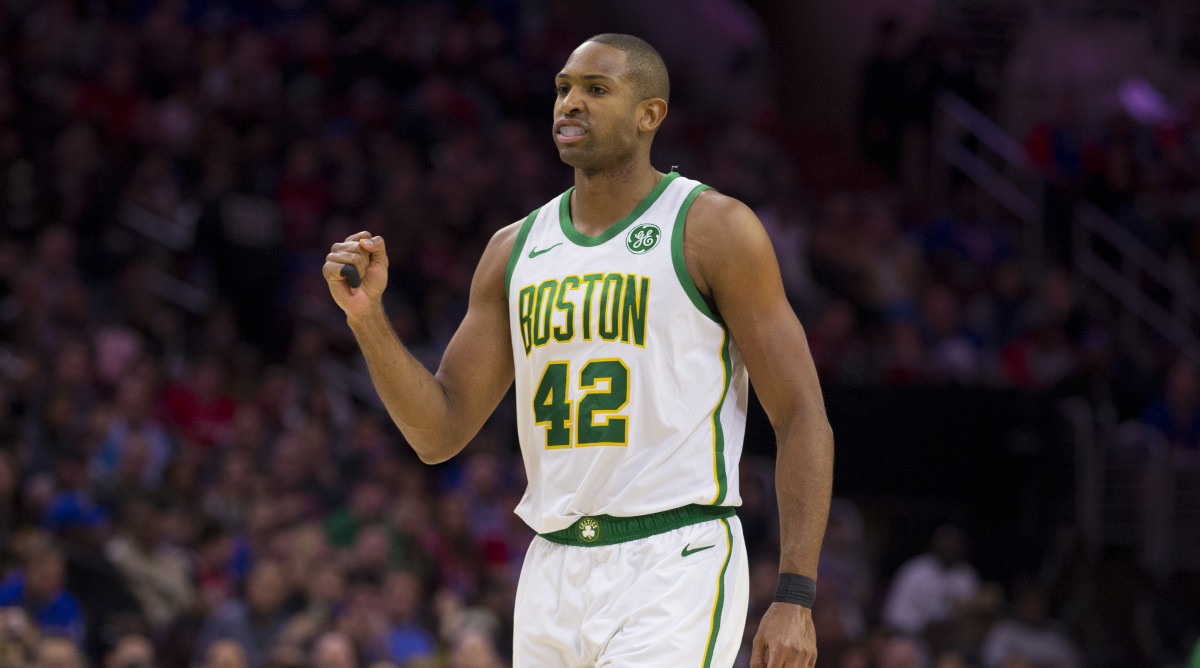Adding Al Horford Jump-Starts the Latest Sixers Reinvention

Long live the weirdo 76ers, forever in the midst of their roster’s reinvention. It was eight months ago that Philadelphia completed a blockbuster trade for Jimmy Butler, accelerating the franchise’s competitive timetable. Three months later, the Sixers pulled off a surprising six-player megadeal to land Tobias Harris, reshuffling their roster with just 28 games remaining in the regular season. Even that version of the roster has already lapsed; with free agency officially just hours old, Philadelphia re-upped Harris on a five-year, $180 million contract, signed-and-traded Butler to Miami in exchange for Josh Richardson, and used the cap space cleared by the trade for their biggest shocker yet: a four-year, $109 million deal to sign Al Horford away from the Celtics.
Under the leadership of general manager Elton Brand, Philadelphia has operated at a completely different frequency from the rest of the league. Adding Horford—and parting ways with Butler—is characteristic of that approach. Today’s Sixers aren’t one to let sunk costs get in the way of a worthy experiment. The latest will somehow make Philly even more of an oddity, effectively swapping out a star wing and reworking lineups accordingly. No team in the league challenges its opponents quite like the Sixers do, what with their 6'10" point guard, game-changing center, and completely atypical offense. Adding Horford adds another layer of complexity to the five-man stress test.
On most nights, Philadelphia’s starting lineup will work a size advantage at every position—all while still being able to stretch, cross-match, and adapt as needed. Four of the five starters (Embiid, Horford, Simmons, and Richardson) could be All-Defense candidates. There will always be some concern for spacing around a combination like Simmons and Embiid, but Philadelphia has found three shooters who can each make plays to exploit a leveraged defense. Harris will attack a close-out and find his way to open space. Richardson is a comfortable option for running secondary offense after the ball moves from one side of the floor to the other. Horford is the kind of facilitator who can help get it there: a reader who understands how defenses work and where they leave themselves vulnerable.

Twisting the roster in this particular way does have its own complications. Harris will inevitably spend more time defending on the wing with Butler (and JJ Redick) now gone. Whatever concerns there were for the way Butler sped up Philly’s plans would have to apply to Horford as well since that he’s more than 10 years older than Simmons. Considering how much the Sixers leaned on Butler as a fail-safe—and just how far Horford is from that sort of role—a good deal of adjustment will be in order.
What makes the idea of adding Horford worthwhile is that he makes for a uniquely elegant solution to so many of Philadelphia’s problems. For a team always in need of perimeter shooting, a big who made 38% of his threes over the past three years is an easy fit. Considering that Embiid is the most important player on the Sixers’ roster, Horford’s ability to play alongside him—just as he did Aron Baynes in Boston, to great effect—changes everything.
Horford also happens to be the best backup for Embiid imaginable. Through him, Philadelphia now has the means to better manage Embiid’s workload throughout the regular season. Selective rest is more feasible. Lower minute totals should be the new normal. Everything the Sixers can do to preserve Embiid’s body and extend his career, they should—in part because Horford helps mitigate any tradeoffs. Philadelphia was outscored by a damning 20.4 points per 100 possessions in the playoffs whenever Embiid was off the floor. Not only will Horford make those lineups far better, but he’ll help keep Embiid that much fresher (and thereby more dominant) for when he checks back in.
Every contending team in the East also has to prepare for a matchup with Giannis Antetokounmpo, who has become a singular cover demanding singular solutions. Horford may be the player best suited for this particular, impossible task. Considering the intricacy of the variables involved, it can be more difficult than it seems for an NBA team to get just the player it needs. A player’s interest, the expiration of a contract, a team’s salary cap space, the internal dynamics of a roster, and the dynamics of a marketplace all have to align just so to make these kinds of moves a reality. Horford isn’t a perfect player. He just so happens to fulfill many of the Sixers’ needs in slightly unconventional ways at the exact time they could afford to bring him in.
There aren’t many franchises who would commit to spending $411 million—yes, four hundred and eleven million dollars—over the next five years to three frontcourt players. The Sixers are just built a bit differently.
Grade: B+
